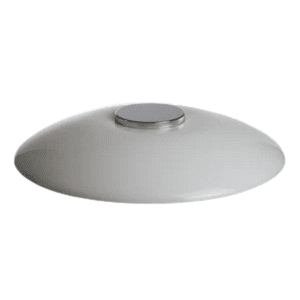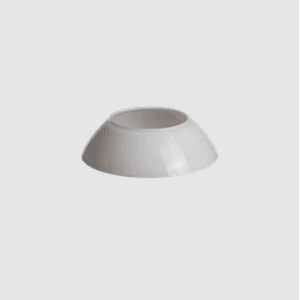800.605.1859 - FREE SHIPPING ON MOST ITEMS OVER $99.00
Accessories
lighting
Designers
- ACHILLE CASTIGLIONI
- ALBERTO MEDA
- ALESSANDRO MENDINI
- ALEXANDER GIRARD
- ALFREDO HABERLI
- ALVAR AALTO
- ANNA CASTELLI FERRIERI
- ANTONIO CITTERIO
- ARNE JACOBSEN
- BARBER & OSGERBY
- CARLO ALESSI
- CARLO MOLLINO
- CHARLES & RAY EAMES
- CHARLOTTE PERRIAND
- EERO SAARINEN
- EILEEN GRAY
- ENZO MARI
- ERNESTO GISMONDI
- ETTORE SOTTSASS
- ACHILLE CASTIGLIONI
- ALBERTO MEDA
- ALESSANDRO MENDINI
- ALEXANDER GIRARD
- ALFREDO HABERLI
- ALVAR AALTO
- ANNA CASTELLI FERRIERI
- ANTONIO CITTERIO
- ARNE JACOBSEN
- BARBER & OSGERBY
- CARLO ALESSI
- CARLO MOLLINO
- CHARLES & RAY EAMES
- CHARLOTTE PERRIAND
- EERO SAARINEN
- EILEEN GRAY
- ENZO MARI
- ERNESTO GISMONDI
- ETTORE SOTTSASS
In-Stock Items
PH 4½-3½ Glass Table/Floor Spare Parts
*****USUALLY SHIPS IN 3-5 DAYS FROM LOUIS POULSEN US WAREHOUSE*****
Design Poul Henningsen
Made in Denmark by Louis Poulsen
The PH 4.5/3.5 Glass Table lamp provides a soft illumination. These lamps are based on the principle of a reflecting multi-shade system, creating a harmonious and glare free illumination. The shades are drawn over a logarithmic spiral, with the center of the light source placed in the spiral's focal point.
The PH fixtures were designed as a rational lighting system where the size of the shade, its material, and its surfaces could be combined mutually according to the nature of the assignment. Each top shade size had a corresponding set of middle and bottom shades such that the proportions between the shades were roughly 3:2:1. One of the basic models right from the beginning was a PH 5/5. The first digit in the fraction indicating the top shade's approximate diameter, and the digit after the slash indicating that middle and bottom shades where "born" to this particular top shade. This means that the 5/5 had a top shade with a diameter of 50 cm, 31 cm diameter middle shade and a 16.5 cm bottom shade. This combination was good when the fixture was to be hung up high, but when the pendants were hung lower it was more suitable with a combination of a large top shade and smaller middle and bottom shades. This is how the PH 2/1 or 3/2 was born.
The PH3-shade system started out as a pendant solution but very quickly it also developed into other kinds of fixtures for tables, floors, walls and a great number of different chandeliers. As a result of using different sizes, materials, surfaces, colors and light sources, more than a thousand variants have been developed over the years.
PH 4½-3½ Glass Table/Floor Spare Parts
*****USUALLY SHIPS IN 3-5 DAYS FROM LOUIS POULSEN US WAREHOUSE*****
Design Poul Henningsen
Made in Denmark by Louis Poulsen
The PH 4.5/3.5 Glass Table lamp provides a soft illumination. These lamps are based on the principle of a reflecting multi-shade system, creating a harmonious and glare free illumination. The shades are drawn over a logarithmic spiral, with the center of the light source placed in the spiral's focal point.
The PH fixtures were designed as a rational lighting system where the size of the shade, its material, and its surfaces could be combined mutually according to the nature of the assignment. Each top shade size had a corresponding set of middle and bottom shades such that the proportions between the shades were roughly 3:2:1. One of the basic models right from the beginning was a PH 5/5. The first digit in the fraction indicating the top shade's approximate diameter, and the digit after the slash indicating that middle and bottom shades where "born" to this particular top shade. This means that the 5/5 had a top shade with a diameter of 50 cm, 31 cm diameter middle shade and a 16.5 cm bottom shade. This combination was good when the fixture was to be hung up high, but when the pendants were hung lower it was more suitable with a combination of a large top shade and smaller middle and bottom shades. This is how the PH 2/1 or 3/2 was born.
The PH3-shade system started out as a pendant solution but very quickly it also developed into other kinds of fixtures for tables, floors, walls and a great number of different chandeliers. As a result of using different sizes, materials, surfaces, colors and light sources, more than a thousand variants have been developed over the years.
You may also like
Subscribe
Sign up to get the latest on sales, new releases and more …









